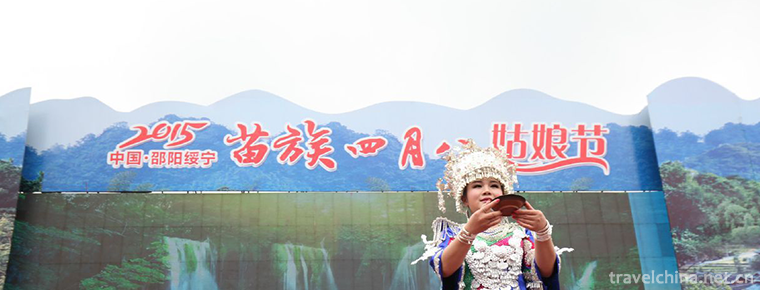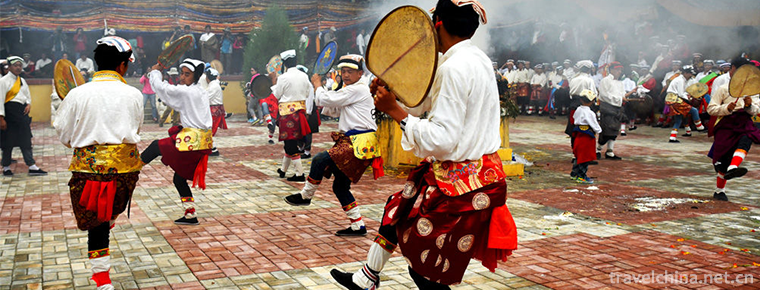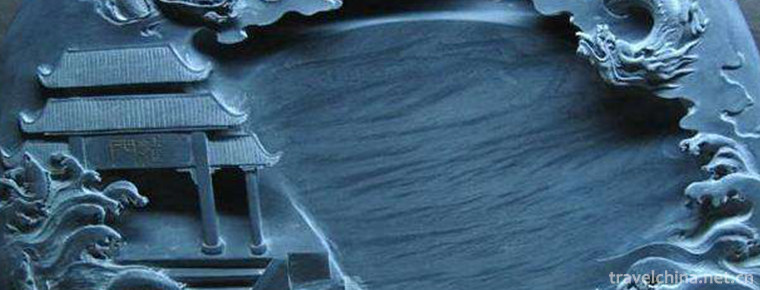Shenhai well
Shenhai well / Shenhaijing Salt Well
Zigong Shenhai well is located at the foot of ruanjiaba mountain in Da'an District, covering an area of 3 mu, with an altitude of 341.4 meters. The well was excavated in the third year of Daoguang in Qing Dynasty (1823 A.D.) and completed in the 15th year of Daoguang (1835 A.D.), which lasted 13 years. The depth of the well was 1001.42m at the time of drilling, and then it was deepened several times to reach the current well depth of 1100 M. Shenhai well produces both brine and gas.
In March 2018, shenhaijing scenic area was officially promoted to a national 4A tourist attraction.
geographical position
China's ancient salt well is located in Changyan pond, Da'an District, Zigong City, Sichuan Province, covering an area of 3 mu. The well location is 341.4 meters above sea level, next to a pond called changyantang. Address: 262 Da'an street, Dagao Road community, Da'an street, Da'an district.
Opening Hours
There are no holidays in the whole year
From February to October in summer: 8:30-17:30 from Monday to Sunday
Winter November to January: Monday to Sunday 8:30-17:00
Ticket Price
For scattered tourists: adult tickets: 20 yuan / ticket, students over 1.3 meters with student ID card 10 yuan / piece, 60 years old with old age card 10 yuan / piece (children under 1.3 meters, 70 years old, disabled, active servicemen, reporters with press card, tour guide with guide card free); for group tourists: adult tickets purchased more than 16 at a time, you can enjoy a discount ticket.
Telephone
0813-5106214
Historical formation and characteristics
Shenhai well was built in 1823 and 1835 respectively. It lasted 13 years and was 1001.42 meters deep. It is the first large well with a depth of more than 1000 meters in the world. After the well was drilled, more than ten thousand barrels of black brine were ejected every day, with a daily output of more than 8500 cubic meters of natural gas and more than 80 salt pans. By 1940, more than 10000 barrels of black brine and 4800 to 8000 cubic meters of natural gas were sprayed every day. Shenhai well has been in production for a century and a half since its completion. Due to the lack of maintenance for a long time, the underground facilities are seriously damaged. After maintenance, the well can still produce about 1500 cubic meters of natural gas per day. According to relevant records, 11 years after the completion of the deep well, a shallow well was drilled by Russia's semunov in 1846, and a small amount of well oil was produced. It was 13 years later that Dirac of the United States drilled a 21.69-meter-deep well in August 1859, from which only 1.8 tons of well oil was produced. From this point of view, the Chinese nation is not only an industrious and brave nation, but also has the intelligence and wisdom that is known to the world.
Its main construction has the pestle room, the cart room, the kitchen room, the cabinet room and so on. The main production equipment includes the frame, derrick, cart, salt pot, salt bin, gas production and transportation facilities, etc., which shows the traditional technology and technology of salt drilling, natural gas production and transportation, brine extraction and salt frying in Qing Dynasty.
Prosper the city with salt
The excavation of Shenhai well not only revealed the secret of the limestone stratum area of Jialing River in the Triassic period, but also brought about the prosperity of Zigong City because of the salt. Salt gentry and merchants from all over the country came to dig wells and set up stoves, which made the city prosperous for a time. In the area of 1.2 square kilometers around, 198 wells have been drilled successively, with an average of 6060 square meters. There is a prosperous scene of well salt production with numerous "crown blocks", dense pots and stoves, vertical and horizontal pipes, and misty clouds.
Shenhai well stove was renamed several times, first Yuanchang stove, Ronghua stove, Qianyuan stove and Siyi stove, and then renamed as guoyiji Dexin stove, Xinji tongsen stove, Junji tongsen stove, Yiji tongsen stove, Jinhe Dexing stove, Fuji Tongyi stove and Jianji tongsen stove.
These deep wells, which have been more than 150 years ago, have gradually reduced the amount of brine and even dried up. However, the natural gas reservoir has been "replaced" and has been in continuous flow. The vicissitudes of the world, until the 1950s, the Shenhai well was shut down due to the reduction of production and the lack of pressure. After that, a few tons of salt were put into the cooking machine, which was used by the workers in each shift.
Now, the Shenhai well stove has been renovated, which has restored the real scene of using cattle to suck brine and boiling salt with low-pressure natural gas produced in the well; it has retained the towering 18.3-meter-high "crown block" made of logs and cables; using the principle of lever, several people step on the wooden frame to impact the well drilling. The old remains of this ancient salt well are open to the public for visitors at home and abroad.
History and culture
Declared cultural relics
The drilling time and depth of Shenhai well will position the well in a glorious position -- the first well with a depth of more than 1000 meters in the history of human drilling! By the way, Mr. Shen's contribution to the development of modern Chinese civilization is not only a symbol of the brilliant achievements of China's ancient civilization, but also a symbol of China's brilliant civilization Drilling technology is also far ahead of the world level. In 1988, shenhaijing was officially listed as a national key cultural relic by the people's Government of Sichuan Province.
Shenhai well crane is known as one of the wonders of Zigong salt field in Sichuan Province. It connects several Chinese fir trees and binds them with bamboo strips to form a huge support. It is used for brine extraction, well cleaning and well control. No matter from the perspective of brine mining or ancient architecture, it is a unique and rare cultural relic in Zigong. According to historical records, Zigong has left a large number of ancient wells and crown blocks during the nearly 2000 years of salt production. In 1914, Ziliujing alone had 960 wells for water and fire, and more than 11800 abandoned wells. Therefore, there is a saying that "Ziliujing salt wells (cranes) are as many as hemp sieves". On February 12, 2006, the "Oriental Eiffel Tower" model and shenhaijing model, known as Zigong's logo, both appeared at the exhibition of achievements in the protection of intangible cultural heritage in China.
Salt making process
Shenhaijing low pressure spark round pot salt making is an old traditional salt making process. The main raw materials of salt making are brine, black brine and salt rock brine. The fuel is low natural gas produced by Shenhai well. The salt making stove type uses the round pot stove, also known as the urn cage stove. The main salt making tools are: stove cage, shovel, tobacco flat, grinding salt flat, etc.
The salt making process is divided into four major processes: first, clean and purify, drain the brine into a round pot, and then put the prepared soybean milk into the pot according to a certain proportion to separate out impurities, so as to improve the quality of salt. The second is to extract impurities. Third, slag salt and shovel salt. The last is to spray salt and test salt.
Drilling technology
The success of drilling Shenhai well is not accidental. It is the inevitable result of the "percussive drilling method" which rose with the emergence of zhuotang well in the Qing Dynasty (1041-1048) of the Northern Song Dynasty. As far as the traditional drilling technology is concerned, only in terms of equipment, up to the drilling period of Shenhai well, it has formed a wooden frame, derrick (crown block), ground roller (pulley) and earth car (winch) Even in today's view, it is scientific and perfect. This equipment is used to drill well. Firstly, the worker stands on the roller frame, treads on the board, tilts the head of the hammer to lift the connected file head, and then the worker jumps away. Under the action of gravity, the file head is pounded against the bottom of the well. With such a step and a jump, the file head falls together and repeatedly impacts the drill. Then, the earth truck is pushed to move the fan mud barrel through the pulley crown block It usually takes several years or even ten or twenty years to drill a well like this when you go down to the bottom of the well and extract the mud and gravel. Therefore, the drilling of Shenhai well not only marks the maturity and advancement of Chinese traditional drilling technology, but also embodies and is full of the determination and hardship of Chinese laborers.
At the beginning of the success of Shenhai well, more than ten thousand tons of black brine were sprayed every day, with a daily output of 8500 cubic meters of natural gas, and more than 80 salt pans could be fired. The daily salt production of Shenhai well was about 14 tons. It not only brings direct and rich economic benefits to the owners, but also provides valuable enlightenment to the operators of the salt field. The "Triassic Jialingjiang formation limestone layer" in the deep stratum is a layer with high salt and black brine and rich natural gas content, thus sounding the clarion call for the salt field to March into the deep stratum.
After that, in a short period of more than 10 years, the operators either drilled new deep wells or deepened old wells, which made Zigong area known as Furong salt field. Salt wells were scattered everywhere, cranes were numerous, and cooking houses were adjacent. The black brine and natural gas resources in the deep stratum were continuously exploited. Furong salt field quickly stepped into the peak period of "abundant water and prosperous fire", and ranked first in Sichuan Province.
Significance of digging
Entering the Millennium salt capital, the mysterious 30 ° north latitude line is deeply felt by the whole world. The successful excavation of Shenhai well has revealed the amazing secret of the limestone formation of Jialing River in the Triassic period, which has been silent for 200 million years: the world's best Zigong black brine contains 27 kinds of trace elements and more than 40 kinds of major elements. Shenhai well is known as the water of life on earth! On the day of the completion of Shenhai well, there was an exciting blowout phenomenon, and the scene was very spectacular. This reminds people of Emperor Qianlong's saying that "the well of fire was once written in Linqiong, but now it is especially prosperous in Fushun mountain". It is still practical and realistic. Shenhai well produces both brine and gas, which completely solves the problem of cooking salt fuel. At that time, the brine flow rate was about 500 tons per day, and it could produce 4800-8000 cubic meters of natural gas per day, and about 14 tons of salt could be burned. It is estimated that according to the average salt price of 40 Wen per jin of salt in 1914, 2100 Wen is equivalent to 1 liang of silver, and the daily income of Shenhai well is 533 taels of silver! This income will make the billionaires ashamed. After the Shenhai well, salt wells more than one kilometer deep began to appear gradually. Moreover, the salt market flourished, and salt gentry and merchants from all over the country came in one after another. According to the past experience of "opening well stoves in areas with more wells and rich brine production" which was easy to succeed, salt wells around Shenhai well "looked at the example" swarmed in. In the area of 1.2 square kilometers around the Shenhai well, 198 wells have been drilled, with an average of 6060 square meters, showing a prosperous scene of numerous cranes, dense pots and pans, vertical and horizontal pipes, and misty clouds. Referring to the relevant records in the records of salt industry in Zigong City, this paper vividly describes the scene of people's voices at that time: "the sound includes the voice of people, the sound of cattle, the sound of cars, the sound of banging, the sound of releasing water, the sound of flowing streams, the sound of boiling soup, the sound of fire, the sound of shoveling pots, the sound of breaking bamboo strips, the sound of beating iron, the sound of sawing wood. Its gas has popularity, cow gas, bubble boiling gas, soot. Then, instead of fighting, the group clamors through the ears, and the sky is covered with black clouds instead of rain. " This magnificent and broad scene has become the unique sound of Zigong, and Shenhai well is undoubtedly the most powerful bright sound.
The Shenhai well was successfully drilled and named with a symbolic meaning. Shen: fire burning on wood means prosperous business. The three fires symbolize the prosperity of business and the continuous flow of natural gas; sea means that salt wells can't be exhausted like the sea, and the wealth is rolling.
Shenhai well is so magical that it makes a world-famous monument.
Scientific value
Shenhai well is a symbol of the maturity of drilling technology in ancient China, and it is a living fossil of well salt produced by indigenous method. According to the folk saying, only the salt of Shenhai well is the most ideal variety of pickles, because the pickles are odorless, do not produce flowers, and are crisp and refreshing, which makes people unforgettable.
Industrial Heritage
In December 2019, Shenhai well was identified as the third batch of national industrial heritage, with core items: Dui room and well drilling equipment and wellhead, cart room and winch room, kitchen room and salt making facilities and equipment, cabinet room, salt bin; crown block, cart, soap pipe, bucket, smoke Lane and brine drying platform.

-
Dazhao Temple Scenic Area in Lhasa
Dazhao Temple, also known as "Zula Kang" and "Jue Kang" (Tibetan meaning for Buddhist temple), is located in the center of the old city of Lhasa. It is a Tibetan Buddhist temple bu.
Views: 123 Time 2018-12-12 -
Zaozhuang Old Street Shuicheng South Shandong
Shuicheng Zaozhuang Old Street in Southern Shandong Province is located in the middle section of Xichang Road in the Central District of Zaozhuang City, Shandong Province. .
Views: 153 Time 2019-02-06 -
Poyang Lake National Nature Reserve
Jiangxi Poyang Lake National Nature Reserve is located in the north of Jiangxi Province. It is a nature reserve for wildlife protection. The main protected objects are rare migratory .
Views: 181 Time 2019-02-07 -
Anshun land Opera
Anshun Dixi Opera, a local traditional drama in Anshun City, Guizhou Province, is one of the national intangible cultural heritage..
Views: 207 Time 2019-04-01 -
Bouyei Pange
Bouyei Pange is a traditional folk song of the Bouyei nationality. It is a folk literary work created and sung in the original Bouyei language. Bouyei Pange is popular in Buyi villages.
Views: 117 Time 2019-04-04 -
Daur Ruzhigle Dance
"Luzhigle" is a representative folk dance of Daur nationality. It varies from place to place, including "Alhambo", "Langtudabe", "Hakumai", "Hagen Melger&q.
Views: 103 Time 2019-04-22 -
April Eighth Girls Day of Miao Nationality
"Girl's Day" originated in memory of Yang Bamei, a heroine. Legend has it that in the Northern Song Dynasty, Yang Wenguang, a famous general, was ordered to be plain and barbarous. After def.
Views: 198 Time 2019-06-05 -
June meeting in Regong
Regong June Festival is a unique traditional cultural festival of Tibetan and Tu villages in Tongren County, Qinghai Province. It has been circulated for more than 1400 years. Every June in the Lunar .
Views: 93 Time 2019-06-11 -
Inkstone making skills
Inkstone making skills, local traditional handmade inkstone making skills in Shexian County of Anhui Province and Wuyuan County of Jiangxi Province, is one of the national intangible cultural heritage.
Views: 139 Time 2019-07-01 -
Hunter peak
Hunter peak is located in the Shuangqiao gully of Siguniang mountain, with an altitude of 5360 meters and adjacent to Jianzi mountain. The two peaks stand shoulder to shoulder, with a huge stone pillar in the middle.
Views: 231 Time 2020-11-05 -
Yibin local specialty
The production of bamboo spring, bamboo carving and bamboo weaving in Yibin city began in Yuan and Ming Dynasty, with excellent materials and local characteristics and life interests. Therefore, he became famous both at home and abroad and entered the court many times..
Views: 363 Time 2020-12-18 -
Administrative division of Dazhou
In 1950, Daxian district was set up, which belongs to the northern Sichuan administrative region. Daxian special office is located in Daxian county and governs eight counties, including Daxian County, Xuanhan County, Kaijiang County, Pingchang .
Views: 100 Time 2020-12-20








